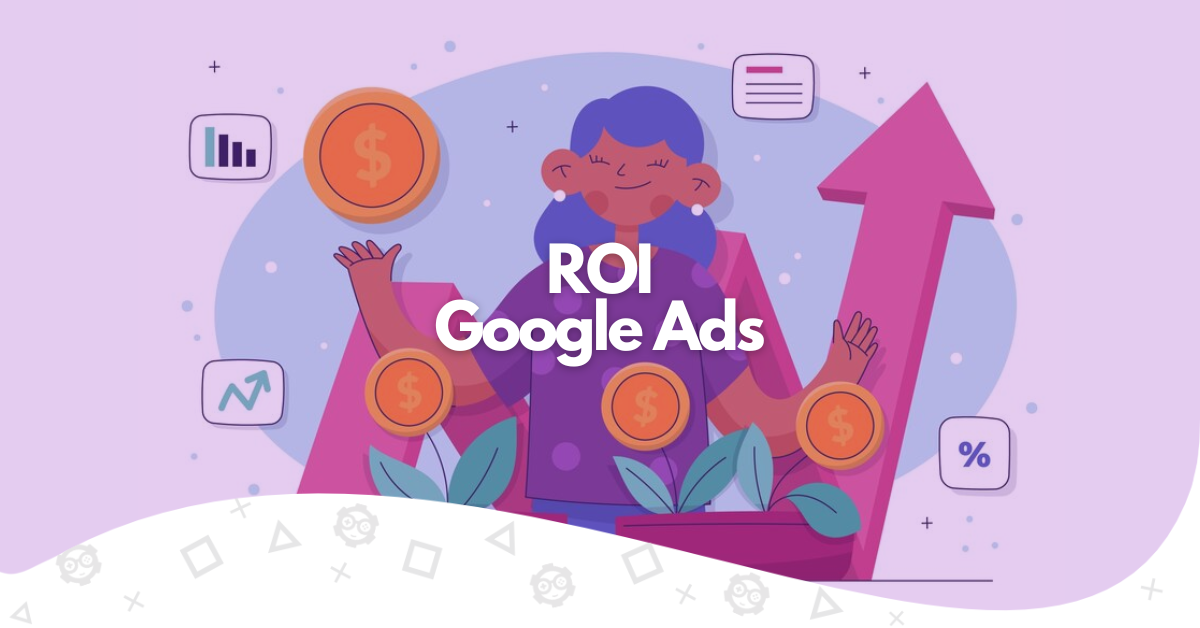Google Ads campaigns are among the best ways to increase brand awareness and generate more revenue for your online business. But to see how much of a good investment your Google Ads account is, it is essential to calculate its ROI.
Monitoring and analyzing this data is crucial for understanding the outcomes of your advertising campaign, providing valuable insights that empower you to refine strategies, minimize advertising expenses, and maximize net profit. You can use numerous marketing strategies in your advertising efforts, so knowing how each one’s ROI is indispensable for a successful Google Ads campaign.
If you don’t know what ROI means or how to calculate it, don’t worry. We’ve got you covered. This article will show you what it is and how to improve ROI in Google Ads. Make sure to follow all the steps and tips below to have the best results when running Google Ads campaigns.
What Is ROI
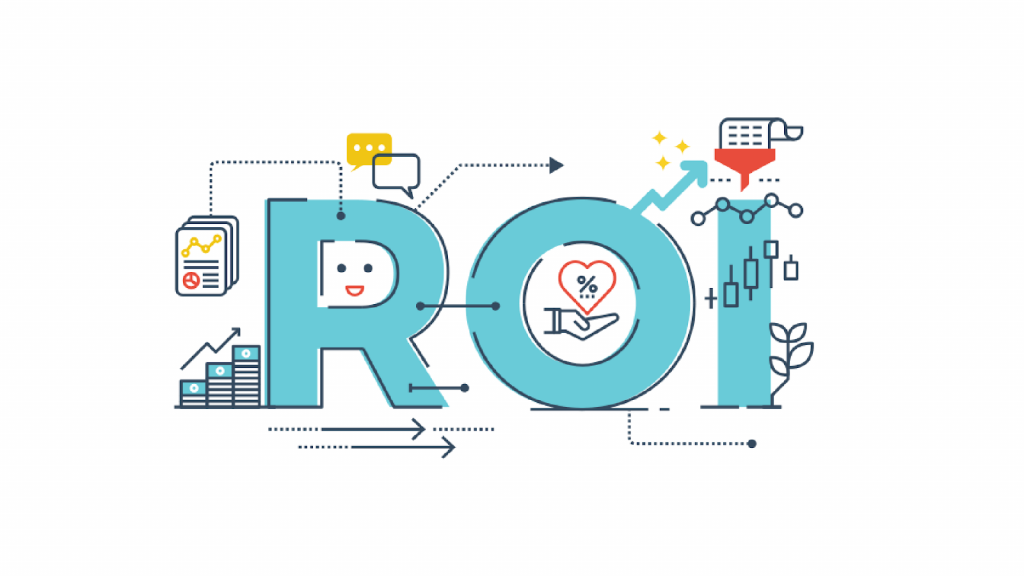
If you run Google Ads campaigns but don’t know what ROI is, here is a quick explanation. The return on investment (ROI) calculates how efficient your efforts are considering the total cost and other information. It can measure the performance of marketing campaigns, sales, and many other aspects of different industries.
When considering how important ads are nowadays, where, according to Clutch.co, 90% of users are affected by paid advertisement, it becomes clear how measuring the return is a vital part of the process.
It is also a valuable tool for paid advertisement since it can tell you how optimized your return is considering the Google Ads costs and other aspects. The objective of return on investment is not to measure how much you’re earning overall but the income and profits regarding a specific investment you made.
By calculating the Return on Investment (ROI) during your ad campaigns, you can distinguish the more effective ones from those failing to yield desired results. This insight allows for informed adjustments in crucial areas such as marketing budget allocation and the strategic direction of your promotional activities.
ROI on Google Ads
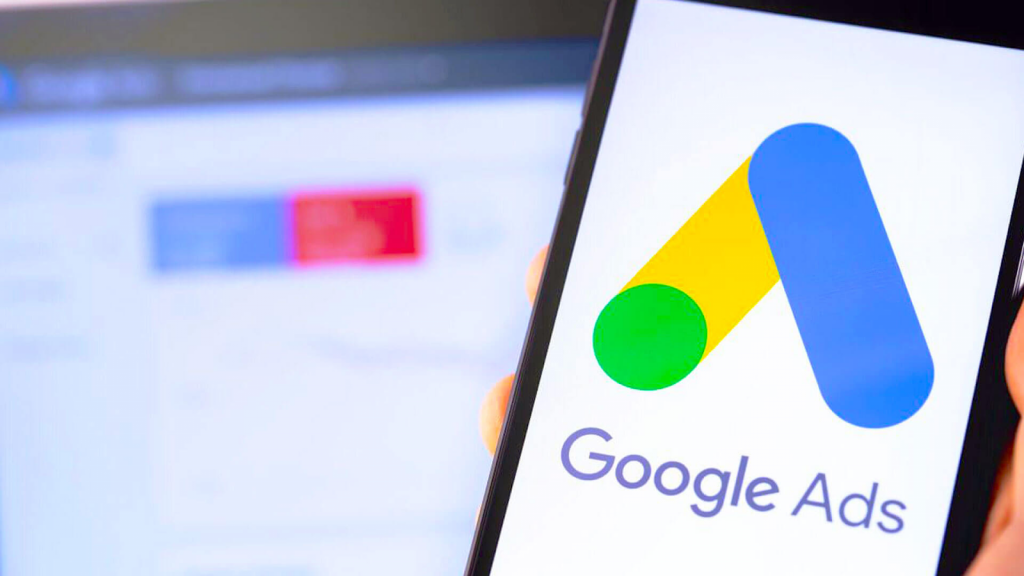
On Google Ads, ROI has the same objective. But here, your investments are your campaign and general ad spend. Through the Google Analytics panel, you can easily track your advertising spend and the average ROI generated by each one of them, making this task even easier.
With ROI, you can see which campaigns perform better, and it also helps generate insights on improving and optimizing your ad network. It is a vital tool for a successful campaign, no matter what kind of business you have or the product you sell.
Moreover, it impacts the advertising campaigns and numerous aspects regarding them, like the cost per click or how effectively your business generates leads with the spent budget.
Google Search vs. Shopping Ads ROI
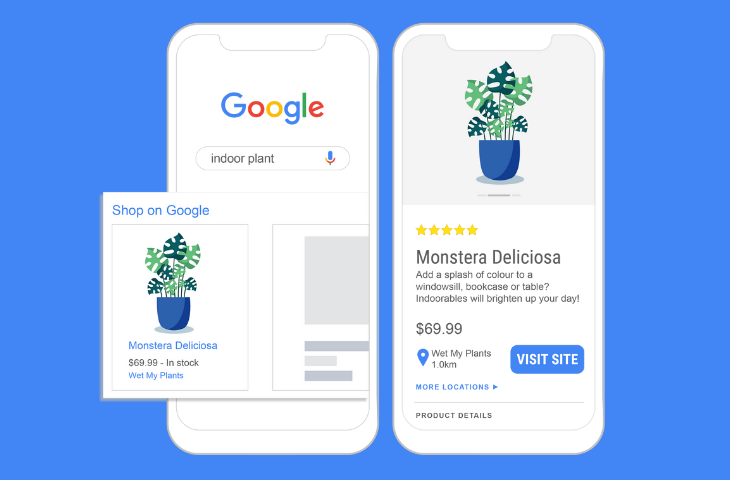
One of the main advantages of using Google for your ad spending is that it supports numerous ad formats and platforms, being one of the most versatile tools for quality online advertising. Some of the main ones are:
- Text Ads on SERPs
- Skippable Videos on YouTube
- Local Business Advertisement on Google Maps
- Email Marketing on Gmail
- Display Ads on Google Shopping
But having numerous ad group options and tactics also means you have different methods to calculate the return on investment. One of the most important details you must know when tracking the return on ad spend is that ROI on Google Shopping Ads differs from ROI on Google Search ads. When doing traditional ads on the search engine results, your Google Ads average ROI will also be calculated using the traditional method and using basic information, like Google ads cost, etc.
On the other hand, when doing shopping tab campaigns, the average Google Ads ROI will be calculated using ROAS instead. ROAS means Return on AD Spend and can easily be calculated by dividing your total sales by the total ad spend of your campaign.
Investing in this kind of campaign is also very lucrative because more and more people are starting to purchase online instead of going to physical stores. According to data gathered by Google, 66% of users prefer to shop online instead of going to the store.
Both methods of tracking ROI are straightforward but might not be too precise based on what objective you want to achieve. For example, if you aim to generate leads, how much you earn does not impact the final results. Even though you earned less than you spent, if you generated the desired leads, it is still a good result. Less earnings don’t mean less successful campaigns. Everything will depend on what you want to achieve.
ROI Formula in Google Ads
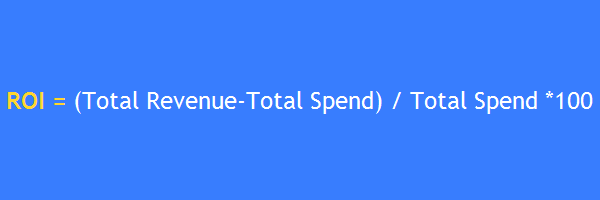
Even though Google Analytics has tools that automatically calculate the ROI for you, it is important to know the Google Ads ROI formula and how you can use it to measure the results of your business online.
It is a simple process and takes a few pieces of data. For using the ROI Google Ads formula, you’ll need two main numbers: Your total revenue and the total costs of your digital marketing campaign.
After collecting the data, you just apply the formula for ROI calculations: ROI = (Total Revenue – Total Cost) / Total Cost.
Remember that ROI only considers the monetary aspect of your investment, so you can have high-performing ads even though your final calculation is low. Everything will depend on your objectives.
You can have campaigns to increase web page visits, engagement on landing pages, conversion rates, and many others. In some cases, ROI won’t be able to measure the campaign’s performance, so make sure to keep that in mind.
How to Calculate ROI Google Ads
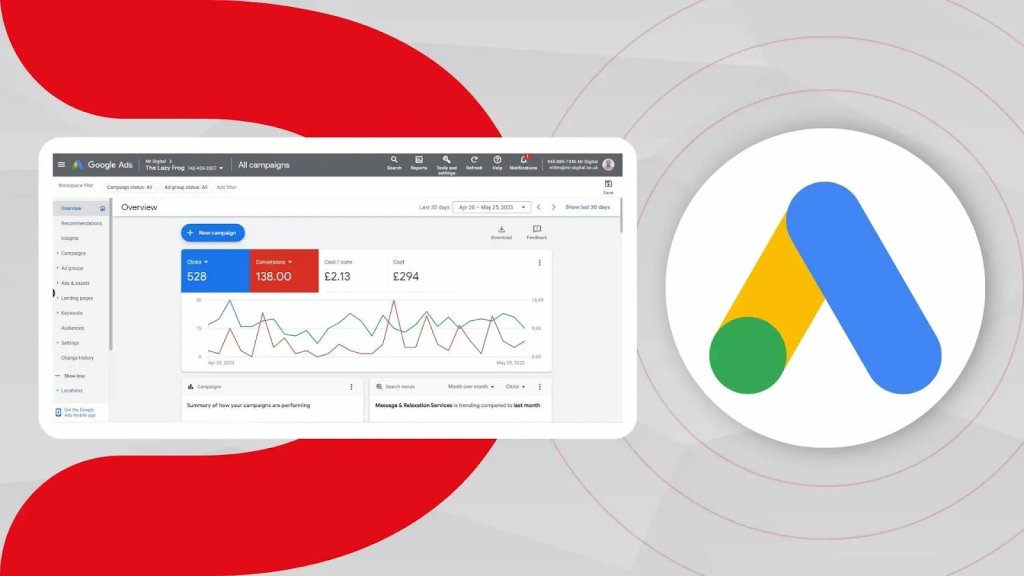
Now it’s time to see how you can calculate the return on investment of your campaigns to measure their efficiency and see what you can do to improve and achieve your marketing goals. Remember to consider their different aspects, like the type of campaign you’re running and which platform you’re using. Google Ads feature several options, going from the SERPs to videos on YouTube, each with its own characteristics.
Here is how to calculate ROI on Google Ads. Make sure to follow all steps and tips to perfectly visualize every aspect needed.
Log Into Your Analytics Account
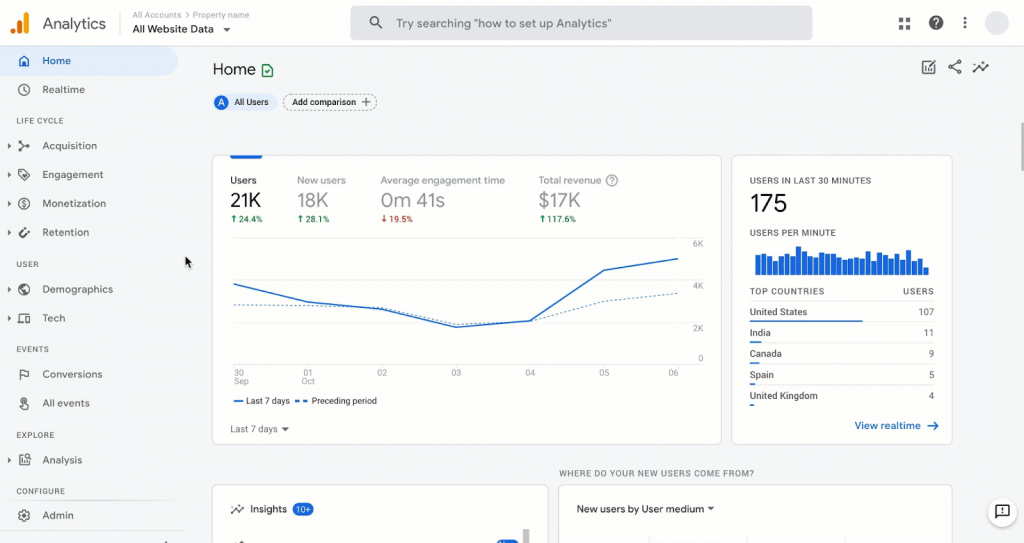
The first step to calculate ROI Google Ads is to log into your Analytics account. It is your main source of information regarding your campaign. From negative keywords to the number of internet users that clicked on your ads, the Analytics panel shows you everything you need to monitor your campaign’s ROI and other important metrics, like conversion tracking data, average CPC, etc.
It also gives you an overview of the average amount spent on each ad and generates insights on what you can do to improve them and reach better ROI. Analytics is an essential ally during the entire process.
Select the Desired Campaign or Ad Group
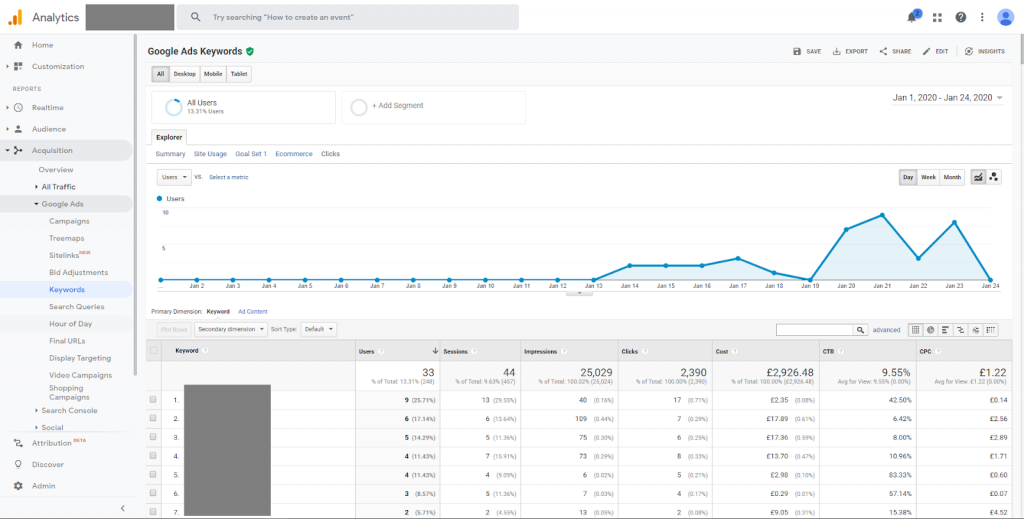
After logging into your account and accessing your panel, select which campaign or ad group you want to gather data about. Depending on the size of your company and how much you spend on advertisement, you’ll have multiple campaigns running simultaneously, so to calculate the ROI, you must select which one you want to track.
The same works for ad groups if you run the same campaign on multiple channels or platforms. You can create a campaign on both SERPs and email marketing. Analytics allows you to track each effort separately to understand each one’s performance better. Separating the investments and analyzing each individually is indispensable for Google Ads ROI calculation. This way, you can precisely tell which investments are helping you reach business goals and which ones are not delivering a positive return.
Gather the Necessary Data
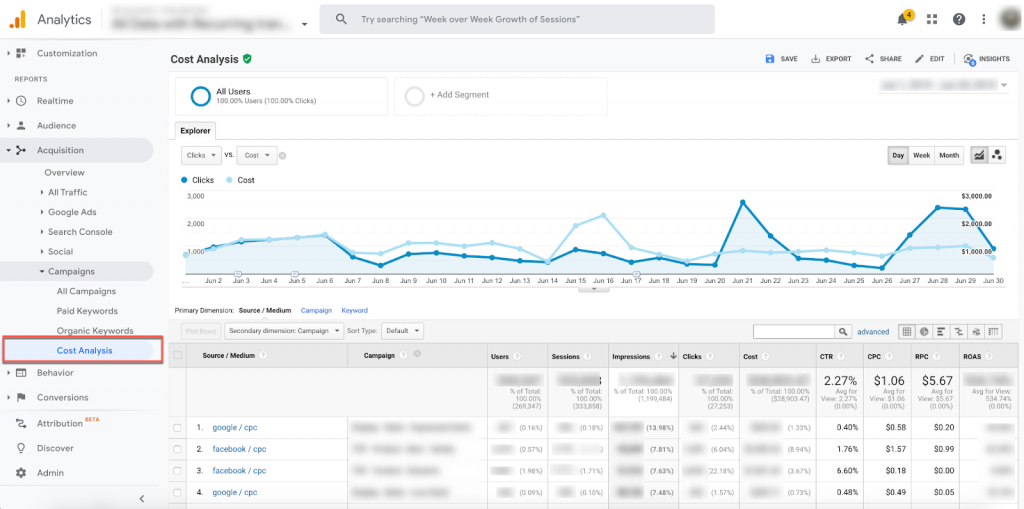
After selecting the desired campaign, Analytics will provide you with detailed information regarding numerous aspects of it, including cost, data about search terms, quality score, etc. You must locate the information you need for calculating ROI. If you’re using the traditional method to calculate the average Google Ads ROI, you’ll need the total revenue and total costs.
These two pieces of data are usually located in the cost analysis tab. Along with them, you can also find numerous valuable numbers that can be used to understand campaign health and other vital aspects. The cost tab is one of the most important and features information such as CTR, CPC, and ROAS.
Apply the Formula
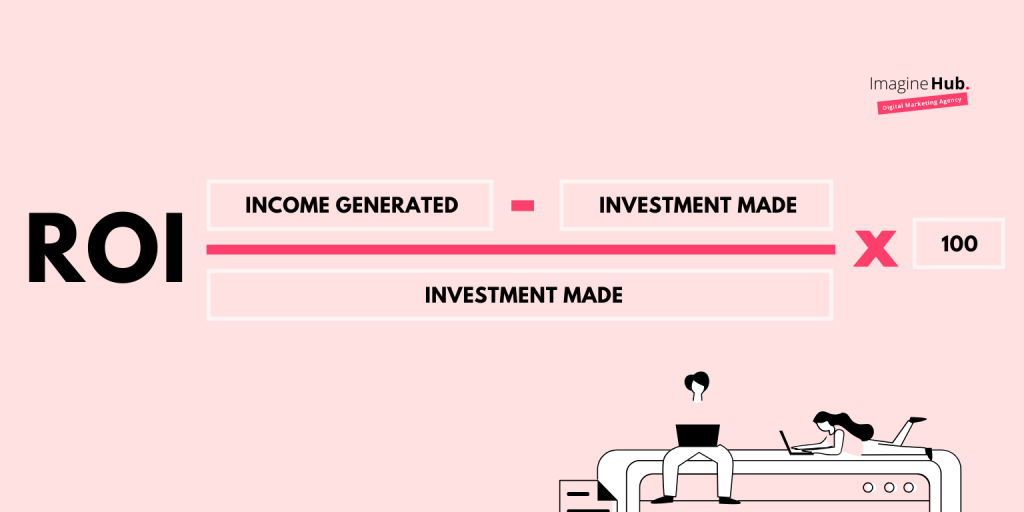
The next step in how to calculate ROI from Google Ads is to apply the formula based on the data you gathered. Remember that there’s a traditional way of calculating ROI using the total cost and revenue. Still, it is not precise, depending on what your business objective is and what type of campaign you are running. Make sure to consider this aspect before measuring the success of a campaign based on this result.
The ROI calculator (Google Ads) automatically does everything for you, but if you want, you can manually do it by using the previously mentioned formula. It is a straightforward process and takes no time.
If you really want to measure campaign success, analyze other aspects, like the click-through rate and other.
How to Calculate ROI Google Ads – Small Businesses
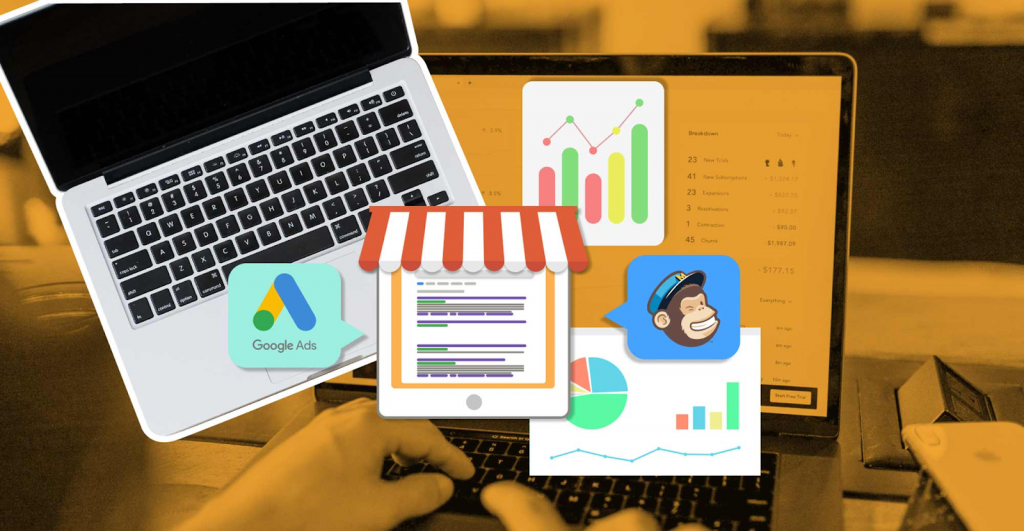
We know that small businesses have numerous particularities and differences when compared to bigger companies, and Google also knows that. You can find numerous tools dedicated to this kind of company, whether for selling online or physical products. You can access a series of tools to help you increase sales locally and worldwide, allowing you to drive traffic and increase goods sold more easily.
The best ROI Google Ads small business tools are available on your account dashboard, where you can track every aspect of your campaign and even set up what you want to achieve, whether it’s more conversions or anything else. By accessing it, you can see a real-time calculation of your ROI considering all the aspects provided, from the income you’re making to how much you’re spending on the ads.
With this visual tool, the ROI helps you to quickly visualize which of your advertisements are generating the best results. You don’t need to do anything since the platform does it for you automatically. But just like in traditional ROI calculation, you can manually do it through the same process.
What Is Good ROI in Google Ads

As we mentioned before, Google allows you to perform a vast number of marketing activities, not only using different formats but also different platforms, so it is natural that some of them will have higher ROI than others. There’s no way to tell the overall average ROI when doing Google Ads campaigns since each marketing effort can bring different results and completely distinct returns.
What is undeniable is that Google can definitely take your business to the next level, regardless of the industry. MediaPost says Google has 73% of the paid search market, showing how powerful the platform is in exposing your products and services to new potential customers.
For traditional paid advertising in the search engine results pages, Google says the user is expected to have a return on investment of 100%, meaning that every dollar spent on advertisement generates two dollars for the business owner.
Different formats and content also mean different budgets for the ads. Even though you can previously decide the amount to be spent, the cost of production of each piece of content also differs. For example, the price of developing text-only ads is drastically different from the price of creating video ads. This also impacts the final ROI.
The last factor that impacts the average ROI is the industry you’re advertising. It is impossible to tell what a good ROI is overall because each industry and business has a different behavior online, generating other returns. The price for generating 500 new leads with tech advertisement is different from the price for generating 500 new leads with marketing services advertisements, for example.
Tips to Optimize ROI
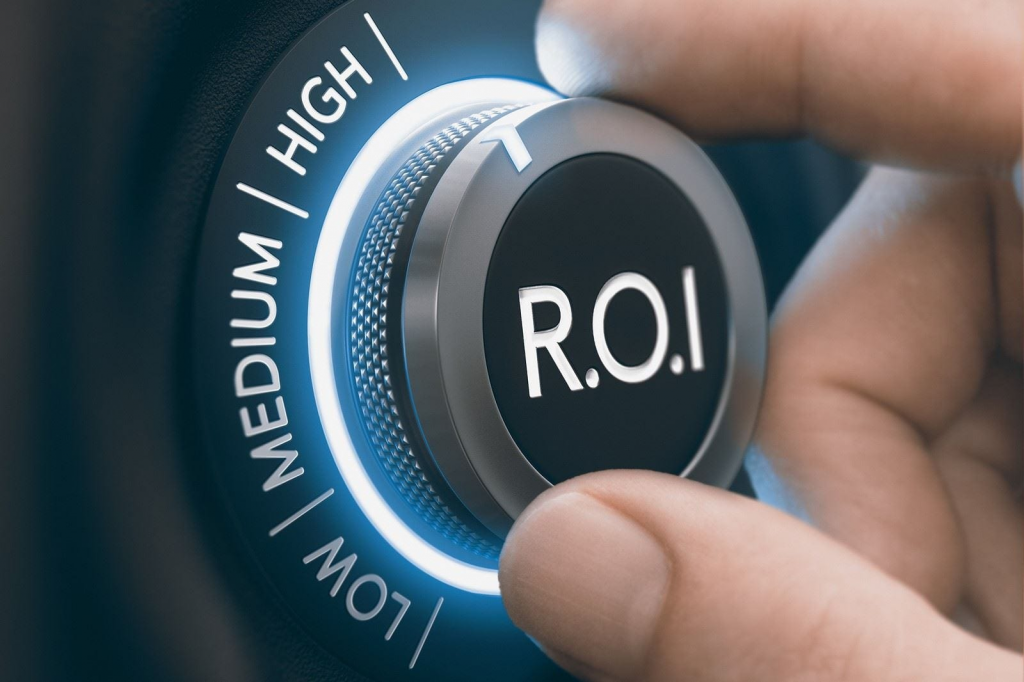
We will list some of the main tips and tricks you can use to increase ROI when doing Google Ads advertisements. Everything contributes to the final result, whether through the keywords you bid on or the platform of your choice.
Make sure to take a look at all the tips below, and you’ll definitely notice an increase in your ROI revenue. Here is how to improve ROI in Google Ads:
Pay Attention to the Other Metrics
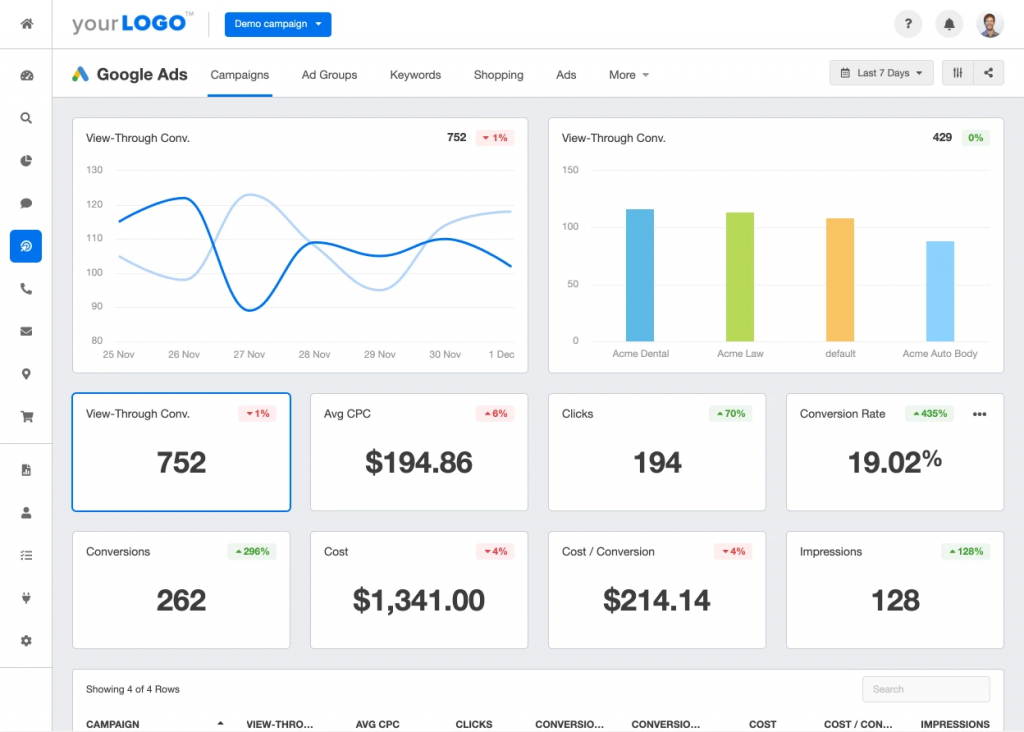
ROI is not the only metric used to diagnose the success of a campaign and its impacts on your company. Other metrics, like click-through rate and cost-per-click, are also directly related to the ROI.
Keeping your other metrics on an optimized level directly contributes to better campaign returns. Moreover, this becomes even more important depending on the objective stipulated in the campaign. For example, if your goal is to generate more leads, you can’t just pay attention to the return on investment and ignore the cost-per-lead or number of leads generated. More than the profit generated, the number of leads is the main indicator of success and is directly related to the ROI.
According to WebFX, the average CPC of a campaign on Google is around $1 or $2. If you notice your CPC is too high, the ROI will be drastically reduced and not generate the desired results.
Optimize Your Campaign Settings
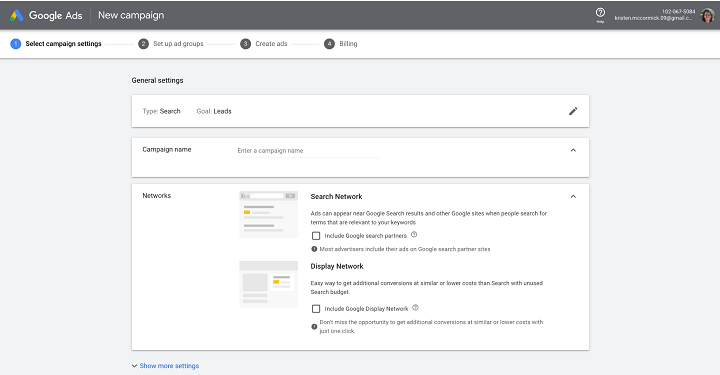
Just keeping track of the metrics is not enough to improve ROI and make your marketing dollars generate more income. The most important part of ROI optimization is to choose the proper settings when creating your new campaign.
From the keywords you’re bidding on to the objective you select for your campaign, everything will have a distinct impact on your final results. Make sure to research your market and audience before making any decisions.
This way, you’ll notice a much higher ROI compared to your previous campaigns. Remember that some markets are more expensive than others to advertise, so keep this in mind when analyzing your returns.
Keep an Eye on Your Competitors

Your competitors tell a lot about what you can do to optimize your campaigns and their ROI. For example, you can pay attention to the keywords they’re bidding on. They have huge potential to be valuable for your ads.
Moreover, details like the platforms they’re using and the kind of ad they’re creating also generate insights on what you can do to make more engaging ads. Your competitors can be great sources of information and inspiration. Ensure you do not ignore them if you want the best results when creating your marketing strategy.
Here are some examples:
Grammarly Business

Grammarly Business is a great example of how to look at the competition and take a different approach to gather good metrics. In this collection of ads from the company, they use a different communication strategy than most of the competitors.
While other companies use classic spell-checking videos showing the tools and situations, Grammarly uses a more emotional approach, focusing on different pain points many business owners have. After that, they show how the tool can help to solve these problems.
The catchy message with emotional storytelling helps gather more clicks to the ad, and by aiming at the pain point of many business owners, it gathers a much higher conversion rate. This rate, combined with the CTR, drastically increases the return on investment in this ad.
DoorDash

Another ad that shows how the smaller elements help contribute to the ROI is DoorDash’s app download campaign. The main positive aspect of this ad is its strong social proof. It not only shows the 4,6 starts score of the app, but also the immense number of downloads, showing people that it’s a trustworthy app with millions of downloads.
This helps with conversion rates and is more likely to convince people to click on your ad. A bigger conversion rate is directly related to a bigger ROI, being a perfect example of how even smaller details of your ad, like social proof, can contribute to more return on investment.
Hire a Professional Agency

If you want your campaigns to have the best results possible and generate higher ROI, hiring a professional company is crucial. By hiring an agency to take care of your PPC campaigns, you ensure every step and process will be done by an experienced professional, increasing the chances of success.
At GamerSEO, we have the best professionals on the market, with years of experience, to ensure you achieve every goal with your online campaigns. Whether you need a competition analysis or a complete online marketing strategy, we have everything you need and work side by side with you to ensure the best results.
We know how hard it can be to create engaging content that appeals to the audience, and we have years of experience developing campaigns aimed directly at our customers’ needs and objectives. Join us, and let’s create quality marketing together.
Time to Start Improving Your Google Ads ROI

Undoubtedly, Google Ads campaigns are one of the best ways to increase sales and boost your business, whether online or locally. The platform provides a series of tools to help with every step and procedure involved in marketing your company.
When creating campaigns of any kind, one of the most important details you must keep an eye on is your Google Ads average ROI. It is responsible for telling many details about your campaign’s health and effectiveness.
Moreover, it can help you decide which investments are worth continuing and which should be ditched. It is a powerful tool, and Google provides you with every piece of information you need to calculate it precisely. Remember that what is good ROI will depend on the type of campaign you’re running, the industry you’re in, and many other aspects.
Now that you know everything you need, it is time to start tracking and optimizing your ROI. Follow all the steps and tips, and you’ll be able to achieve all your goals more easily.

A PPC specialist who started with organic social media. For several years, the core of his activities are:- Google Ads, Microsoft Ads, Meta Ads, TikTok Ads, Twitter Ads, Linkedin Ads. He has led campaigns with a global reach, e.g. for FootballTeam, G2A, ETOTO, as well as many smaller campaigns in the sports, construction and financial industries. Has full focus on ROAS. Privately, a fan of football, history of wars and Star Wars.

